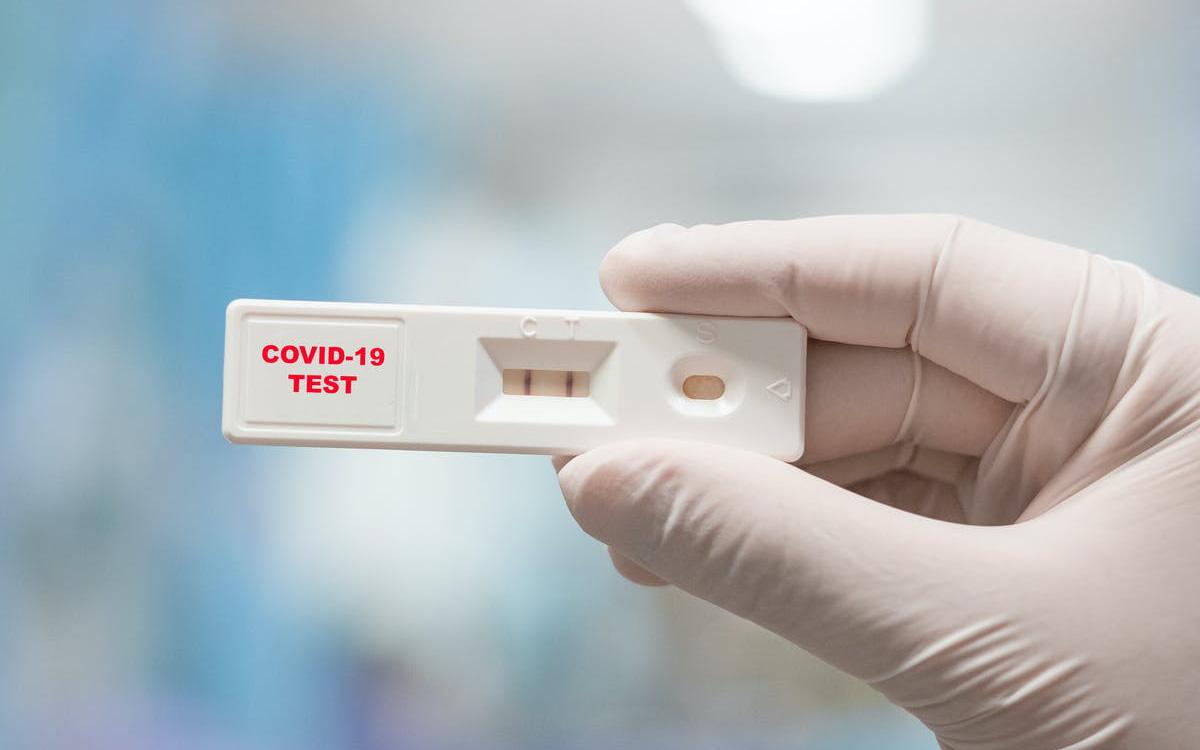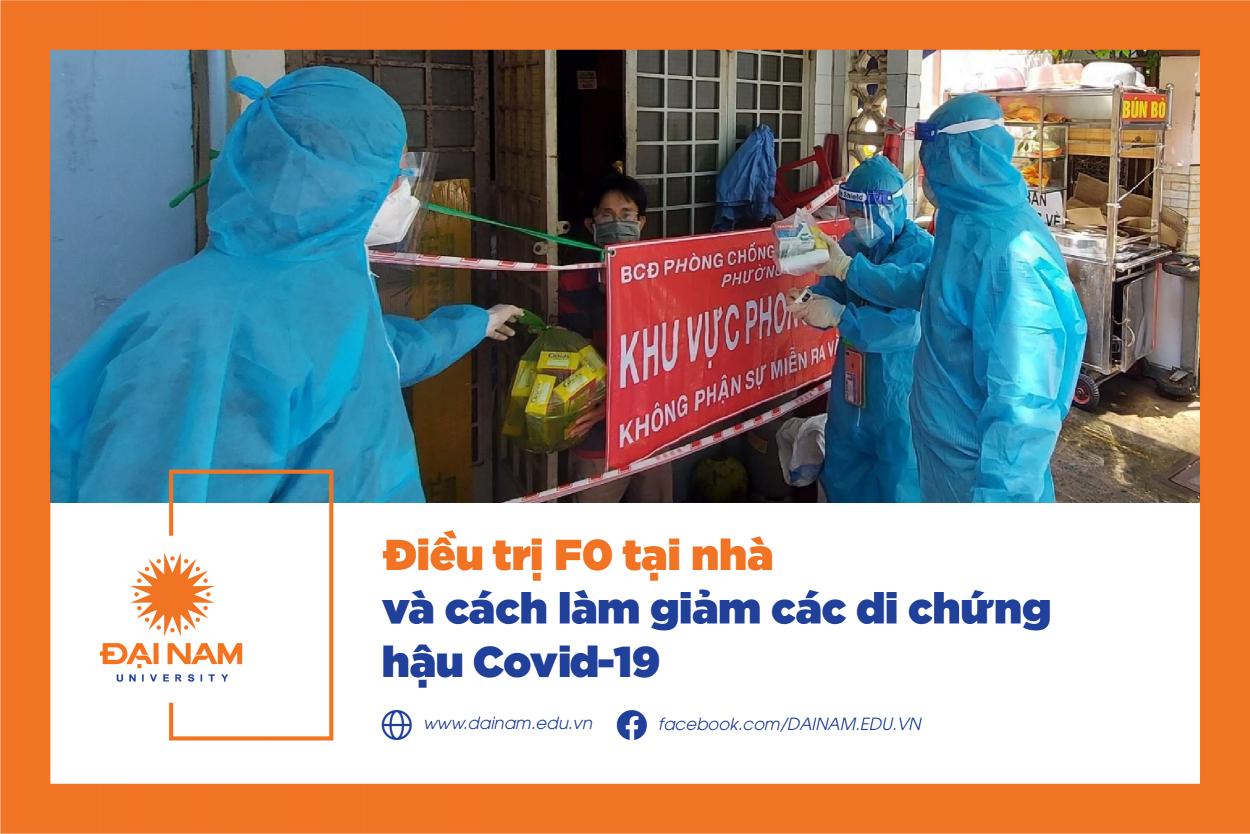Treating F0 at home and how to reduce post-Covid-19 sequelae, preventing infection for caregivers

Which F0s are allowed to be treated at home?
According to regulations of the Ministry of Health, F0 managed and treated at home must meet the following conditions:
- F0 has no symptoms or mild clinical symptoms;
- F0 has no signs of pneumonia or hypoxia;
- F0 does not have underlying disease or has underlying disease but is being treated stably;
- F0 is capable of self-care. In case F0 is a child or a person who cannot take care of himself/herself, a caregiver is required;
Note: F0 who have not been vaccinated are between 3 months and 49 years old, have no underlying diseases, are not pregnant, are not obese... and can be treated at home.

Things F0 needs to do when receiving treatment at home
People who have been fully vaccinated against Covid-19 will have much milder symptoms when infected than those who have not received any vaccine. The main symptoms are sore throat, fatigue, muscle pain, cough, sneezing, runny nose, with or without fever, difficulty breathing, especially at night and early morning. Even mild symptoms still have a significant impact on the patient's daily life.
To reduce the severity of the disease, F0s need to perform the following self-care activities to maintain their health and the health of those around them:
Self-isolation:
Stay in a separate room, use separate eating and drinking utensils, wear a mask, and regularly disinfect your hands before touching household objects. In particular, dirty clothes, blankets, mats, pillows, and waste from people with Covid must be kept separate and handled separately.
Home care:
F0 needs to prepare medicine and medical equipment, including: Fever reducer, medicine to treat underlying diseases (if any), vitamins, ozerol rehydration and electrolyte packets, thermometer, mask (at least 2 pieces/day, enough for 2-3 weeks), gloves, SpO2 meter, blood pressure monitor (should have), saline solution for gargling, nasal irrigation, phone number of the nearest medical staff.
People with Covid-19 will recover quickly if they keep a comfortable mentality, eat and rest properly. Symptoms of the disease such as cough, runny nose, sneezing, and shortness of breath will be reduced if the patient performs the following methods:
- Drink plenty of warm water, regularly wash your nose, gargle with saline to help clear your airways. You can steam, but only steam the nose and throat area (inhaling hot steam from medicinal water only has the effect of clearing the airways immediately and is not effective in treating Covid-19, so do not overuse it. Steam a maximum of once a day to avoid dehydration and damage to the nasal and throat mucosa).
- Practice breathing regularly, exercise gently depending on your physical strength and level of difficulty breathing. This is very important to prevent post-Covid-19 complications. Because when you practice breathing well, your lungs will be able to expand and contract to the maximum, blood will circulate better to help your lungs recover quickly when damaged by the effects of the virus. Gentle exercise helps reduce stress and reduce muscle pain because blood circulates to the organs continuously, thereby increasing the amount of oxygen to the organs and tissues, helping them quickly eliminate stagnant toxins.
- When having difficulty breathing at night, the patient should lie in a position with the head and back raised. Actively breathing through the nose or mouth can lead to dry mouth and nose. At this time, it is necessary to prepare warm water to gargle or saline to wash the nose to breathe more effectively. Measuring blood oxygen concentration with a meter ≥ 97% is normal.

- Fever is a common symptom, especially in children with Covid-19. Fever is above 38.5 degrees Celsius before taking antipyretics to avoid overuse of antipyretics leading to damage to liver and kidney function. Antipyretics can be taken multiple times when high fever does not decrease, but the minimum interval between doses must be about 4-6 hours.
In addition to taking antipyretics, the patient should wear thin clothes, lie in a place protected from the wind and cover with a thin blanket. Apply warm compresses to the patient by using a towel soaked in water at a temperature 3-5 degrees Celsius higher than the patient's body temperature, wiping in areas with good heat dissipation such as the forehead, temples, neck, hands, elbow folds, armpits, thigh folds, elbows, feet to dissipate heat, and apply continuously. Do not apply cold compresses or use cool water to wipe the body because it will make the patient catch a cold, and the fever will increase if the heat is not released. Monitor body temperature every 30 minutes.
- Nutrition: F0 should eat normally with full and balanced nutrition groups, diverse foods to maintain normal health and physique. Add 1 to 2 extra meals such as milk and dairy products, especially when reducing appetite due to fatigue, cough, fever... Eat more protein-rich foods (meat, lean fish, beans, nuts to prevent muscle atrophy and increase resistance. Drink enough water from 2 liters/day or more if fever, diarrhea, and limit eating too many sweets.
How to monitor disease progression and provide emergency care when F0 patients have severe symptoms
Call the nearest medical staff immediately or take the patient to the emergency room if the following signs appear:
- When having difficulty breathing, shortness of breath (breathing rate ≥ 20 times/minute for children over 12 years old and adults; ≥ 40 times/minute for children from 01 to under 05 years old; ≥ 30 times/minute for children from 05 to under 12 years old).
- Peripheral blood oxygen saturation (measured by SpO2 machine 97%).
- For children, see difficulty breathing, rapid breathing, and chest retraction.
- Frequent chest pain, feeling of chest tightness, pain increases when taking a deep breath. Need to give oxygen immediately (if available), have the patient lie with head elevated, and massage the chest area.
- Change in consciousness: Confusion, drowsiness, lethargy, very tired/exhausted, fussy child, lethargic sleep, difficult to wake up, convulsions. Purple lips, purple fingernails, toenails, blue skin, pale lips, cold fingertips, toes. Temporarily do not let the patient eat or drink anything to avoid food getting into the airway. Monitor continuously.
- Pulse >120 beats per minute or less than 50 beats / minute.
- Maximum blood pressure 90mmHg, minimum blood pressure less than 60mmHg (measured by blood pressure monitor).
- High fever above 39 degrees Celsius with no signs of improvement.

How to reduce the risk of infection when caring for F0
- Comply with epidemic prevention principles: Wear a mask, disinfect hands frequently when in contact with sick people and their belongings.
- All personal items of the patient must be cleaned and disposed of separately.
- If there are people in the house with underlying diseases, pregnant women, or children, they need to be taken to a safe area.
- Caregivers need to regularly gargle, wash their nose, make medical declarations and monitor their health such as measuring temperature, testing for covid when there are unusual symptoms such as cough, fever, fatigue, difficulty breathing...
- Strengthen your health and immune system by eating and resting properly, supplementing with vitamins and fresh vegetables and fruits every day. Exercise to improve your physical condition.
Faculty of Nursing, Dai Nam University
Register for admission consultation 2025
scholarships and tuition support worth up to 55 billion VND

scholarships and tuition support worth up to 55 billion VND









